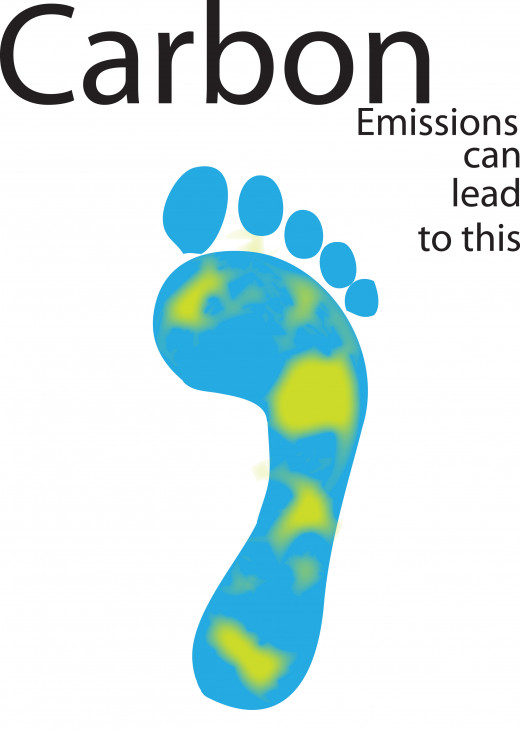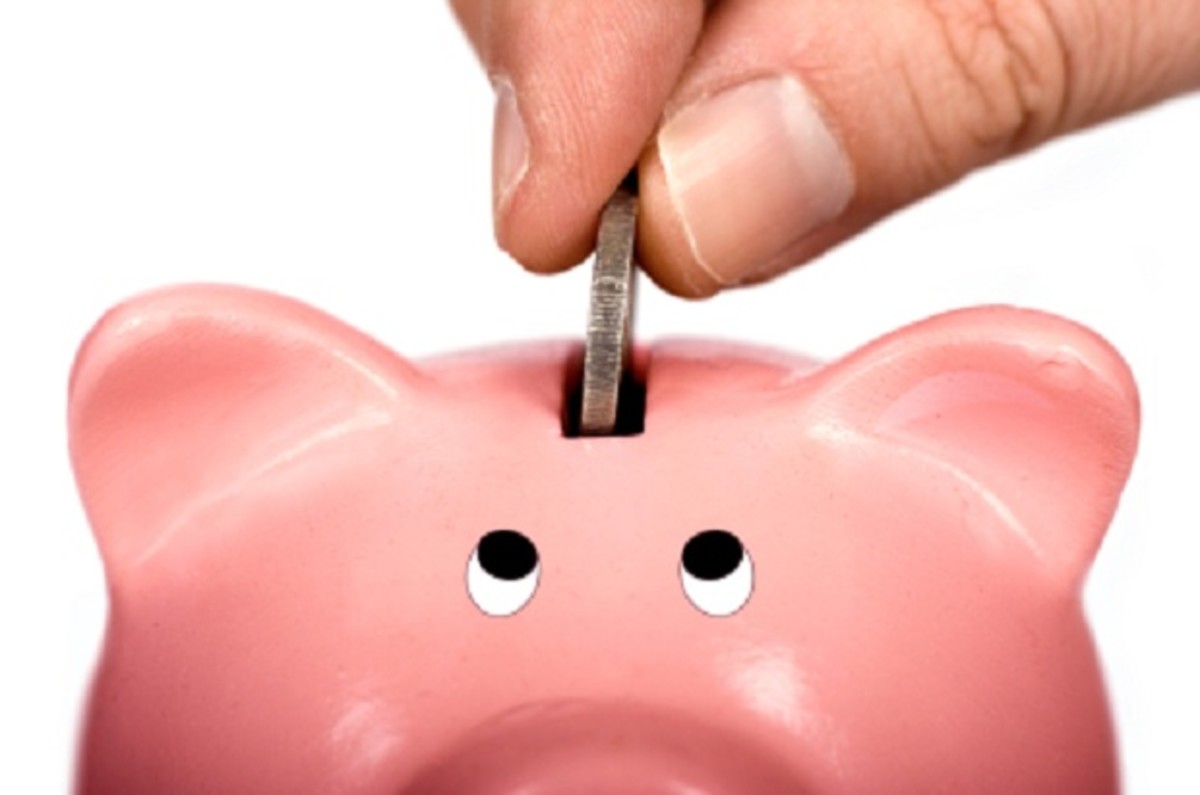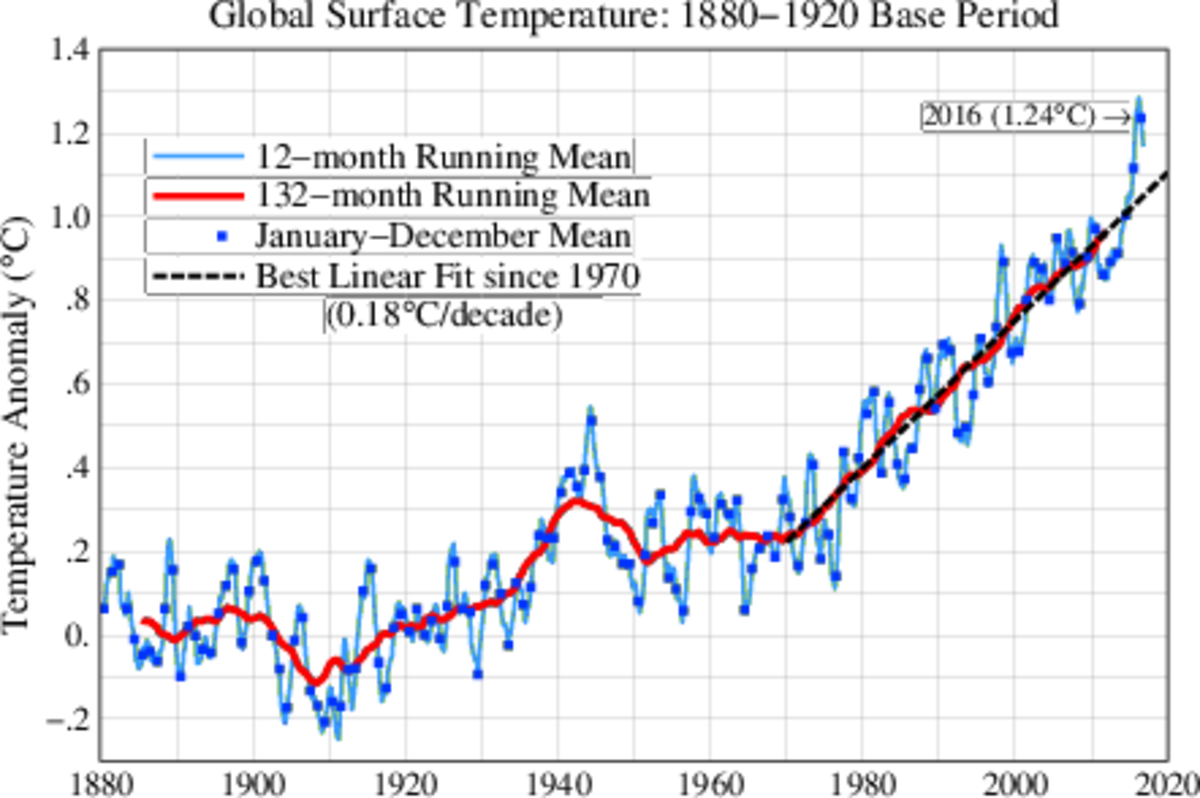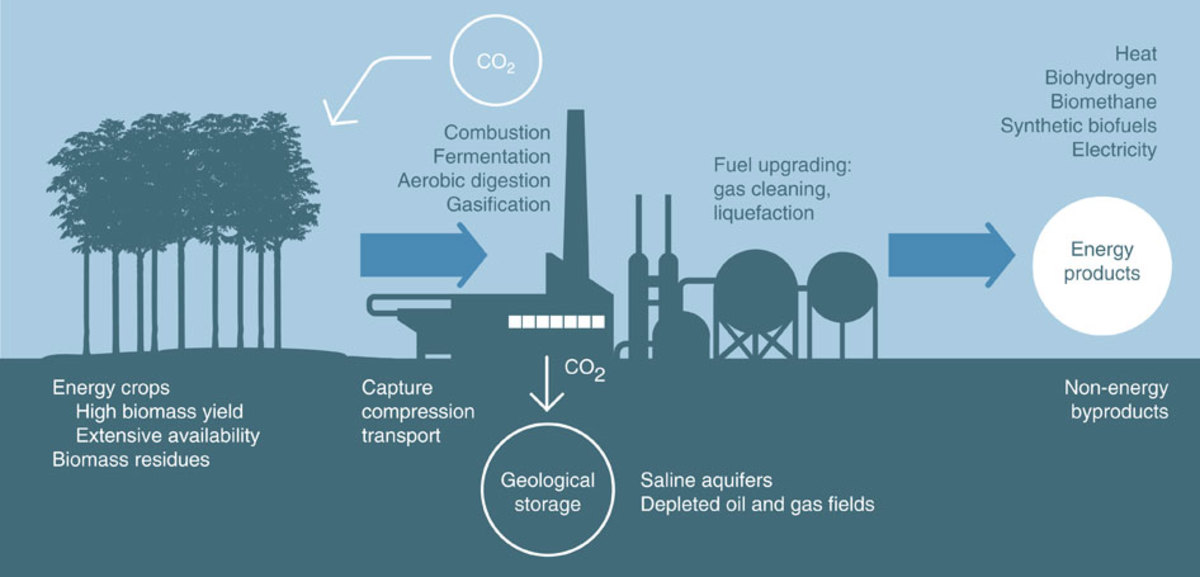How to Reduce Your Carbon Footprint and Save Money

Most people think that is expensive to go green because they might have to buy organic products, unleaded petrol, eco-friendly cars, houses, and technologies. However, this is not the case. It is actually possible to save a great deal of money by adopting a low carbon footprint lifestyle. This can easily be done by making one new change each week, create a strong savings habit and save hundreds of dollars every year.
We can save money and help the planet by being mindful of our choices when using electricity, transportation, water, food, fuel, paper and the internet.
What is a Carbon Footprint?
The dictionary meaning of 'carbon footprint' is 'the amount of carbon dioxide emitted due to the the consumption of fossil fuels by a particular person, group, etc.' This means it is measuring the amount of carbon dioxide released into the atmosphere as a result of our activities, purchases or usage of different products. For example, the true carbon footprint of using a car includes not only the amount of fossil fuels it uses, but also the emissions as a result of extracting the oil, shipping, refining and transporting the fuel. It also takes into the account the amount of emissions caused by the manufacture, transport and maintaining the car.
The World Map of Carbon Dioxide Emissions
- The world map of CO2 emissions | Environment | guardian.co.uk
Which countries in the world emit the most carbon dioxide? How fast has China overtaken the US to reach the number one position? And why does Gibraltar have such high emissions per person? Check out this interactive guide.
Carbon Dioxide causes Global Warming
Carbon dioxide is just one of the greenhouse gases that cause global warming and climate change. When we make an effort to reduce our carbon footprint we will automatically reduce the emissions of other greenhouse gases such as methane, chlorofluorocarbons and nitrous oxide.
Carbon dioxide emissions are the result of most human activities. In 2010, it accounted for 84% of all US greenhouse gas emissions from human activities. Even though it is naturally present in the atmosphere of the Earth, we humans have altered the carbon cycle by our activities. We have not only released more carbon dioxide into the atmosphere in human history but also reduced forest areas which process it and converts it into life giving oxygen.
Save Money and Reduce Your Carbon Footprint
The general rule is: support your physical life at the smallest possible cost of pain to the lower lives. -- Annie Besant
This advice can also be interpreted as 'support your physical life at the smallest possible cost to the environment and other lives.' Having understood that every activity we engage in during our day-to-day activities results in carbon dioxide emissions we can begin by following the basic four 'Rs': Refuse, Reduce, Reuse and Recycle. These same rules apply to saving money as well.
How to reduce your carbon footprint at home and save money
Refuse to Buy What you Really Don't Need
The most important points to think about while shopping are:
- Do I really need this? - Refuse to buy on impulse. Think twice before purchasing something with we think is necessary but we can probably do without.
- How many times will I use it and for how long will I use it? - If it has a short shelf life, or is use-and-throw, then refuse to buy it. Rather go for something that can be used for a long time and be reused with a small upgrade.
- Is the product over packaged? - Most products are packaged for visual effect rather than as a necessity. Refuse to buy over-packaged goods.
- Is it locally produced or has it been transported from another country? - Choose locally produced/manufactured goods over those which are transported from far off countries. Refuse to buy the latter and save on carbon dioxide emissions caused by transportation.
- Refuse to accept plastic bags. Take your own bag. The manufacture of plastic is also mostly from fossil fuels.
Action to Take
| Estimated Yearly Savings
|
|---|---|
Turn all appliances off at the wall (lights, kettles, electric ovens, etc)
| $100.00
|
Turn appliances on standby off at the wall (microwaves, stereos, televisions, DVD players, computers)
| $100.00
|
Wash your clothes in cold water instead of warm/hot. (2 loads/week)
| $13.00
|
Dry your clothes outside or use a drying rack instead of the dryer.
| $85.00
|
Replace your 60-watt incandescent light bulbs with energy saving bulbs
| $30.00
|
Total
| $ 328.00
|
Save Electricity to Save Money
Begin to reduce the use of electricity and this will save you a great deal of money. For example:
- Turn off your hot water cylinder if away for 2 weeks or more.
- Wash full loads of laundry.
- Reduce the use of heat lamps
- Turn down the central heating slightly (1 to 2 degrees C). Just 1 degree will help reduce your heating bill by about 8%.
- Fill the kettle with only as much water as you need
- Turn down the water heating setting
- Check the central heating timer setting - regulate it so it is on only when you are at home.
- Replace your old appliances with new energy efficient ones whenever possible.
Food Choices and Water Usage Tips to Save Money
Animal agriculture produces over half of earth's greenhouse gas emissions. The most important thing one can do to reduce the carbon footprint and save money is to reduce meat and dairy products in the diet.
- Observe Meatless Monday or add One Vegan Meal a Day. See Vegan Recipe Guide for tips.
- Have shorter showers instead of baths – save 20 gallons of water
- Install low-flow shower heads
- Turn the water off while brushing your teeth
- Reduce the flow of water while washing your hands
Action to Take
| Estimated Yearly Savings
|
|---|---|
Reduce Meat in your diet to once a day
| $444.00
|
Go Vegetarian and save 4000 gallons of water per year
| $600.00
|
Reduce buying takeaways and eating out by 50% per family
| $2000.00
|
Stop buying bottled water
| $240.00
|
Total
| $3284.00
|
Save Paper to Save Money
- Print double-sided, non-color and reuse old printed pages.
- Chose to receive bills and bank statements electronically and save dollars.
- Make your notes on your electronic devices.
- Think twice before printing a document or email.
- 10% reduction in printing saves 5 tonnes of carbon dioxide.
Action to Take
| Estimated Yearly Earnings
|
|---|---|
Carpool to work
| $650.00
|
Spend quality time at home rather than go out for entertainment
| $1200.00
|
Total
| 1850.00
|
Save Fuel to Save Money
- Walk to work if you live within 30 minutes from work.
- Make a shopping list and then do all your grocery shopping in one trip.
- Use public transport – bus or trains to work.
The Carbon Footprint of Emails and Internet Browsing
According to the Guardian Weekly (5-11 August 2011) 1.5 billion people use the internet daily. Such technologies contribute 2% to European greenhouse gases. The reason for such a great carbon impact is because of the energy required by computers to send and receive emails – including the centers that store and process data – as well as energy required to make electronic components.
Tips to reduce the carbon footprint while sending emails:
- Send an email to fewer recipients – by adding 10 addresses, greenhouse gas emissions increased fourfold.
- Removing just one addressee results in reducing 44kg of carbon dioxide a year per employee.
- Reduce the size of the emails.
- Reduce the number of attachments. Sending a link to a page might be better.
- Delete unnecessary and old emails – storing them may be convenient, but the longer the email is retained, the greater its impact on the climate.
Browsing – is also polluting the atmosphere because the servers that undertake these searches use electricity, generate heat and must be kept cool. Using search engines to obtain information generates about 10kg of carbon dioxide per user, per year.
- use precise keywords
- directly paste a URL into the web browser
- save frequently visited sites and bookmarks or favorites
The above steps can save up to 5kg of carbon dioxide annually per person. When we reduce our internet activities we can choose the least expensive plan for our homes and devices and save money.
Did you know you could Save Money and the Environment at the same time?
Money Saved is Money Earned
The first step is to make the decision to reduce our individual carbon footprint and save money. The next step is to continue to do so in our offices, clubs, groups and other places where we spend our time and money. In the long run we would save a lot of money which we can use for further reducing the carbon footprint and hence taking care of the planet.
Related Articles for Saving Money and Your Impact on the World
- How to Make a Positive Impact in the World
We can make a positive impact in the world both as individuals and as a group of like-minded people. The change must begin with us and every choice we make affects our fellow human beings, other sentient beings and the planet. We can definitely have - How to Invest Money Wisely
There are two approaches one can take when investing in the share market. The ‘active’ way, where an investment is managed to ‘beat the market’ to get better than average returns. The ‘passive' way, where a long-term (15-20 years or longer) approach - Vegan Recipe Guide
We have to be mindful that we are feeding our bodies with the foods that are best for its sustenance and the well-being of the planet. This guide is for meat/fish eaters, people who would like to change to a healthier diet to prevent chronic disease. - Becoming a Vegan
The first thing any concerned person can do is to become a vegetarian and then go one step further and become a vegan. The decision to become a vegan has a two-fold purpose: firstly, the Earth's well-being and secondly, personal well-being. Learn mor









